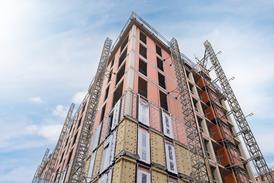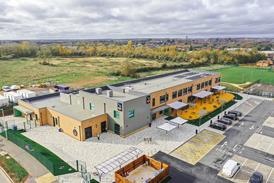Hard to say how many votes it will win him, but Gordon Brown’s £1.5bn contribution to the Homes and Communities Agency deserves a few cheers from the construction industry.
The money is intended to deliver 20,000 affordable homes and build the infrastructure to stimulate another 10,000 private ones. The government has also initiated a new model for housebuilding: councils are to begin building again, and contractors will be given land in return for a share of the equity in the finished product. If these ideas work, they could create a whole new way of doing social housing.
As our news story points out, the total amount built will probably be 10,000 short of the 70,000 target that was to have been reached in 2010/11. But given that it was set in 2007, before the recession turned all those section 106 agreements into fish and chip paper, it’s thousands more than anyone expected.
A more realistic grumble is that the government has robbed Peter to pay Paul – a point dramatised by the news that, of the 180 further education colleges that applied for Learning and Skills Council money, a mere 13 are to get just half what they asked for. So all those inspirational new builds look like turning into chewing gum and Polyfilla refurbs. This concern is heightened by Whitehall departments themselves: they have no idea where this £1.5bn is coming from, though there’s talk of the Decent Homes budget being slashed and money siphoned from the Treasury’s PFI rescue pot.
But we have to be pragmatic. The government knows its finances are about as bad as they could be in peacetime, and it still has to do what it can to stimulate the economy and impress the voters. So, aiming the money at affordable housing is a shrewd move. First, it will probably be spent: unlike most state agencies, the HCA (in its previous incarnation as the Housing Corporation) has a good record of putting its money to work. Second, it will be spent quickly: unlike schools and hospitals, housing sites with planning permission can be mobilised quickly. Third, it’s good PR, as all the cartoons of Brown the Builder this week illustrate. (And, as a bonus, the government now has a pretty good retort to those complaining about preferential treatment for bankers and car-makers.) Finally, there is a social pay-off for those in desperate need of housing. And that’s some good news, at least.
The government knows its finances are about as bad as they could be in peacetime, and it still has to do what it can to stimulate the economy and impress the voters
What bedzed tells us now
Our revisit to BedZed, the UK’s first zero-carbon housing development, provides plenty of food for thought. As you might expect with a prototype scheme, there have been successes and failures. Individual homes still perform well but the infrastructure around them did not. Its biomass CHP element was an amazingly elaborate affair that never seems to have worked as it should and was, in the end, abandoned (along with the water recycling and large-scale CHP systems).
This is not good news for all those developers going down the biomass route. Zedfactory, the architect behind BedZed, now fits small biomass boilers to clusters of homes and provides the electricity from PV panels, an approach likely to be adopted by Lovells, the social housing specialist. So which is best? Broadly speaking, small boilers suit small developments and site-wide systems suit mega schemes. But there’s a caveat. The lesson from BedZed is that nobody knows until these schemes are up and running. Given the rarity of fully-functioning ones, that should make us especially thoughtful.
Denise Chevin, editor



























No comments yet